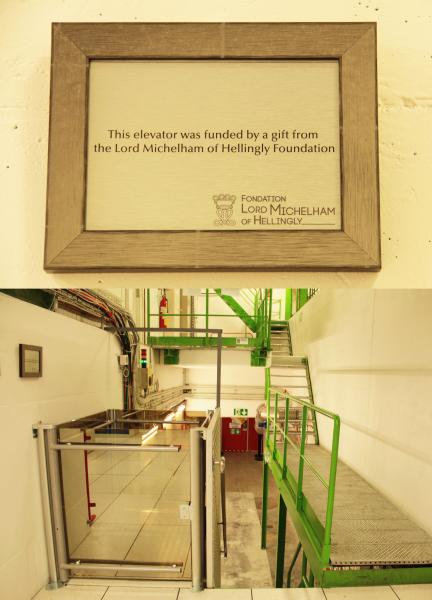The CMS experimental site, located in the French commune of Cessy, hosts one of CERN’s major scientific instruments and is a popular visit point.
“We estimate around 50,000 visitors will have been to the CMS experimental cavern during the current shutdown (December 2012 – March 2015),” says Austin Ball, CMS Technical Coordinator.
In addition to the regular visits conducted throughout the shutdown, CMS also welcomed visitors on two special occasions: the CERN Open Days in September 2013 (~5500 people underground) and the CERN Neighbourhood Days in May 2014 (~4500 people underground).

CMS Technical Coordination and the CMS Safety team, responsible for all experiment-related activities on the site, consider outreach to be an important aspect of the CMS mission. This is why, if you work either in the above-ground CMS control room or in the underground areas, you will frequently encounter groups of curious visitors. They are accompanied by CMS guides, who take a break from work to talk about what they do, introducing the guests to particle physics and the engineering behind CMS.
To see the detector itself, visitors first take a lift to go about 100 metres underground, where they are shown the many racks of systems powering, monitoring and reading-out the detector, and then taken through the eye-scan system into the detector cavern. A short stairwell along the visitors’ path previously prevented visitors on wheelchairs or those with other physical disabilities from entering the detector cavern. To facilitate access for these guests, CMS embarked on a mission to raise funds for a special wheelchair lift to be installed alongside the stairway.
Our project inspired the Lord Michelham of Hellingly Foundation from nearby Carouge, who kindly supported our endeavour with the necessary financial aid. The Foundation supports people with physical and mental disabilities, development efforts in South Africa, and assistance to elderly people in need.
Thanks to generous contributions from the Foundation and from CERN, who also supported our cause, the lift was installed in November 2014 and is now fully operational.
“Now, visitors in wheelchairs will be treated in the same way as any other visitor and can stay with their group throughout the entire visit,” says Wolfram Zeuner, CMS Deputy Technical Coordinator.
Christoph Schaefer, former group leader in matters of CMS Safety, concurs: “Fundamental research at CERN is done for all of humanity, and we would like all members of society to have barrier-free access to our research facilities. The new lift removes one such barrier, making it possible for our visitors to experience our work to the largest extent possible.”
CMS will resume operations when the LHC beams re-start later this year. From that point onwards, visitors may be allowed into the experimental cavern only during short technical stops, year-end technical stops and longer breaks in operations. Nonetheless, even if the detector might not always be accessible, underground visits will continue to take place on a daily basis and the lift will remain on the visitors’ path.

CMS would like to express our heartfelt gratitude to the Lord Michelham of Hellingly Foundation for supporting our desire to make science more accessible to all members of society.
The installation of the lift itself was possible thanks to the efforts of Sandro Di Vincenzo. We are grateful to everyone who contributed to this project.
The views expressed in CMS blogs are personal views of the author and do not necessarily represent official views of the CMS collaboration.
